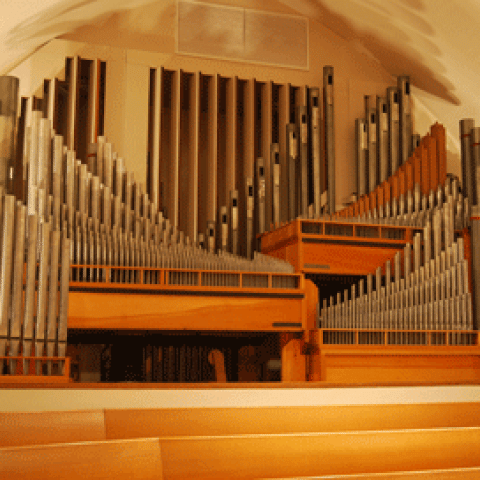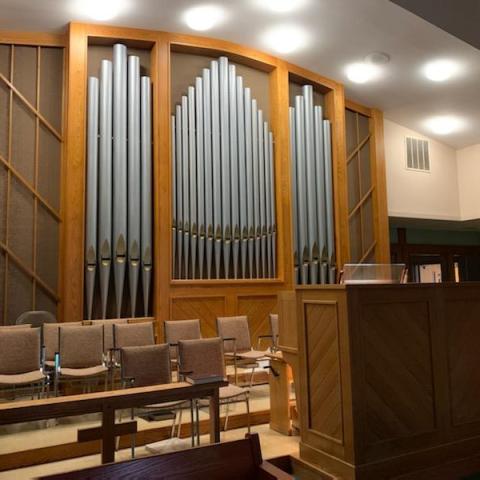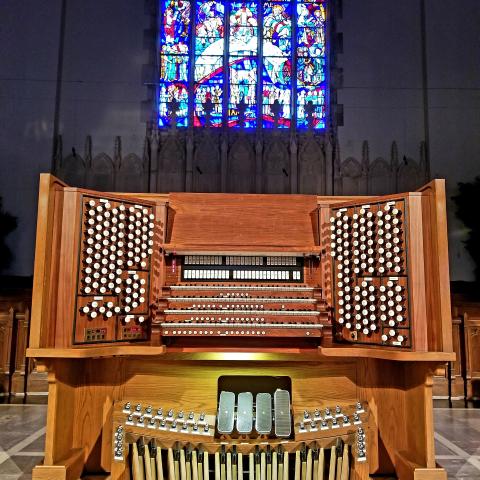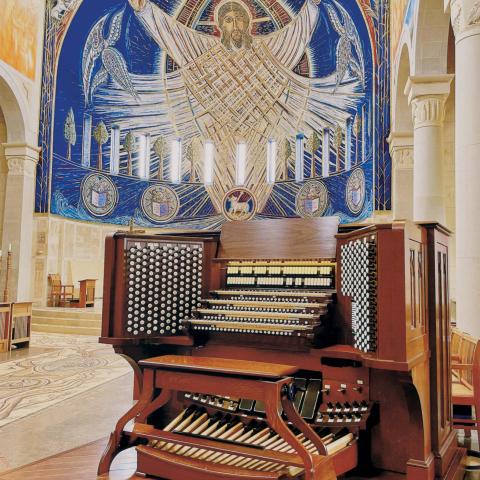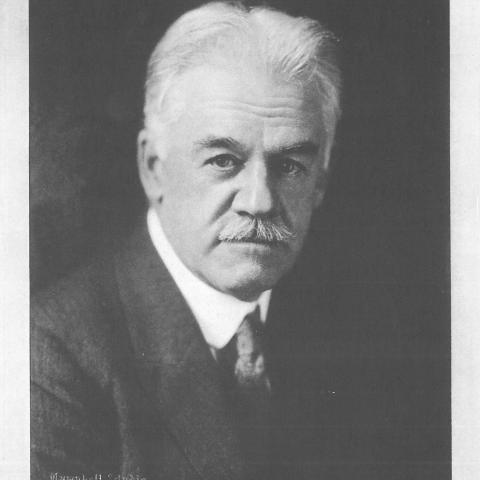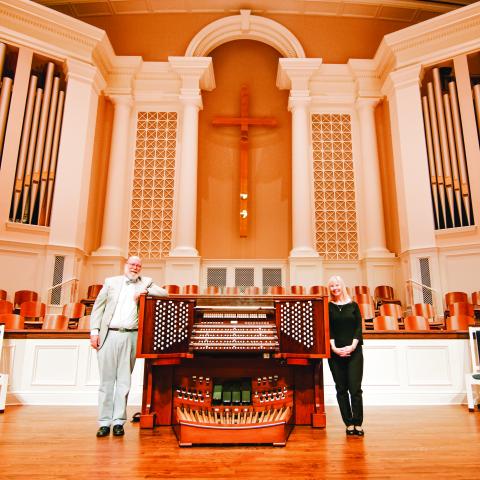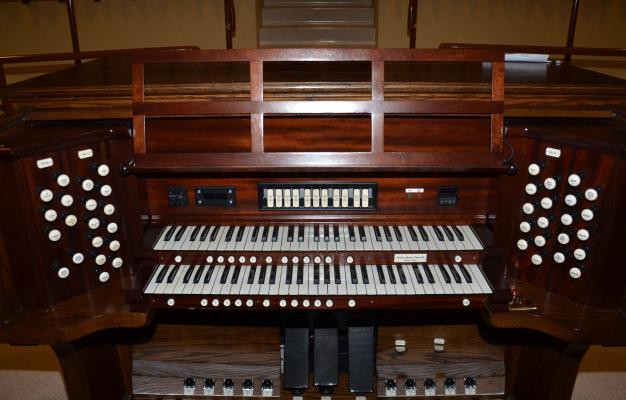
Case Organ Company, Inc.,
Verona, Wisconsin
Bishop O’Connor Chapel,
Holy Name Catholic Center, Madison, Wisconsin
The Case Organ Company has completed restoration and relocation of Aeolian-Skinner Opus 1204. The organ was installed in Bishop O’Connor Chapel at Holy Name Heights, Madison, Wisconsin. The instrument was blessed at a choral dedication recital with Lessons and Carols sung by the Madison Diocesan Choir and organ solos performed by Glenn Schuster on December 19, 2017.
For this contract we originally purchased Opus 1244 from a Christian Science Church in Rockford, Wisconsin. This organ was a bit small for the new space so we intended to expand it with four ranks. Fortuitously we found out about the availability of the slightly larger Opus 1204 only two weeks later. Opus 1244 was put into storage at our shop where it remains, available for a future contract, while work commenced on Opus 1204.
Opus 1204 was first installed in First Congregational Church, Kenosha, Wisconsin. Originally ordered in 1949, the Korean War intervened to delay production and delivery until 1953 due to both shortages in material and skilled pipe makers. The organ restoration has retained all original ranks and chests. The one addition has been to make the Pedal 16′ Gedeckt playable on the Swell manual. Due to limitations in borrowing from the Swell manual chest, an additional 29 new notes and chest were required. The pipes were sourced by Tommy Anderson, an original Aeolian-Skinner Company pipe maker now retired.
All zinc pipework was stripped of its resin coating and refinished with traditional shellac. Scrolls were replaced on all flues where metal had failed from fatigue. All reeds were stripped, cleaned, and re-shellacked. New brass wedges were fitted throughout. Scrolls on all reeds were replaced.
The oak console was stripped and refinished to match the original dark walnut finish. Stop knobs and tilting tablets have been replaced with Harris components. The console and chamber relay has been upgraded to a SSOS solid-state system.
The restoration was carried out in partnership with Spencer Organ Company of Boston. Great care has been taken to restore the organ in a historically sensitive manner with changes made only to correct problematic issues with Aeolian-Skinner organs over the years. Tonal finishing was accomplished by Jonathan Ambrosino, Martin Near, and Bruce Case.
GREAT (expressive, 33⁄4″ w.p.)
8′ Diapason 61 pipes
8′ Bourdon 61 pipes
8′ Flauto Dolce 61 pipes
8′ Flute Celeste (TC) 49 pipes
4′ Octave 61 pipes
Grave Mixture II 122 pipes
Chimes (21 tubes)
Tremolo
Great Unison Off
Great 4
Swell to Great 16
Swell to Great 8
Swell to Great 4
Antiphonal on Great
SWELL (expressive, 4″ w.p.)
16′ Gedeckt (Chimney Flute) 29 pipes
8′ Chimney Flute 73 pipes
8′ Viole de Gambe 73 pipes
8′ Viole Celeste (TC) 61 pipes
4′ Gemshorn 73 pipes
Mixture III 183 pipes
8′ Trompette 73 pipes
8′ Oboe 73 pipes
Tremolo
Swell 16
Swell Unison Off
Swell 4
Antiphonal On Swell
PEDAL (4″ w.p.)
16′ Bourdon 32 pipes
16′ Gedeckt (Sw 8′) 12 pipes
8′ Octave 32 pipes
8′ Flute (ext Bourdon) 12 pipes
8′ Gedeckt (Swell)
4′ Choral Bass 32 pipes
Great to Pedal 8
Swell to Pedal 8
Swell to Pedal 4
Antiphonal on Pedal
ANTIPHONAL (expressive, prepared)
8′ Diapason 61 pipes
8′ Flute 61 pipes
8′ Dulciana 61 pipes
8′ Unda Maris (TC) 49 pipes
4′ Principal 61 pipes
4′ Flute 61 pipes
Tremolo
Antiphonal 16
Antiphonal Unison Off
Antiphonal 4
ANTIPHONAL PEDAL (expressive, prepared)
16′ Bourdon 32 pipes
8′ Flute 32 pipes
Accessories
10 General pistons
5 Great pistons
5 Swell pistons
5 Pedal pistons
General Cancel (thumb)
Great to Pedal reversible (thumb)
Swell to Pedal reversible (thumb)
Full Organ reversible (thumb)
Setter (thumb)
Next General piston (thumb)
Previous General piston (thumb)
Transposer Up or Down (8 semitones)
Relay system by Solid State Organ Systems
Photo credit: Richard Jones

